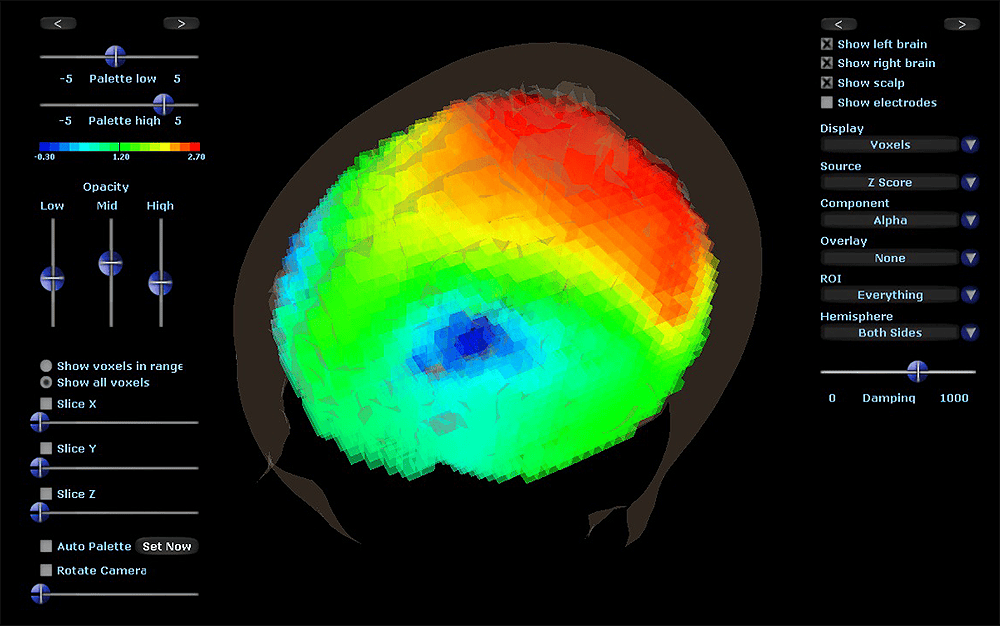

EEG Imaging and Biofeedback in the Traumatized Brain
“We need never be hopeless,
because we can never be irreparably broken.”
— John Green
Results of EEG Imaging and Biofeedback of traumatized brains found in individuals experiencing traumatic and emotionally charged stimulation and experiences illustrate instantaneous patterns of activation indicative of individual emotional and decision-making patterns.
We find that the responses of the frontal lobes demonstrate specific positive and negative emotional responses, and underlie decision-making processes. The frontal hemispheres are lateralized, in that the left hemisphere and right hemisphere perform different functions; both are necessary for healthy, flexible, adaptable responses. Depending on past experiences — particularly trauma — this balance of reactivity may be affected.
• The left hemisphere takes care of sequential, logical processing, and produces positive, or “approach” responses.
• The right hemisphere takes care of parallel, recognition-based responses, and produces negative, or “avoid” responses.
Both of these are important, so that the individual is able to respond appropriately to positive or negative stimuli and situations. Examples are given of both adaptive and flexible responses, as well as fixed, inflexible responses. Inflexibility is associated with reactive, fixed, and maladaptive responses. Imaging a biofeedback of brain activity according to this model can be applied to counseling — and other clinical activity — to help empower and enable clients to have healthy responses, consistent with goals and to produce beneficial mental states and behaviors.
The attached talk was presented at the 27th Annual Psychological Trauma Conference in Boston on June 2, 2016. 2016 Trauma Collura EEG
“It takes ten times as long
to put yourself back together
as it does to fall apart.”
— Suzanne Collins


